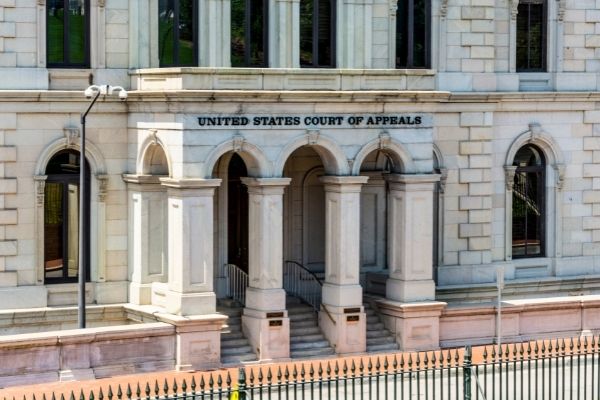Trusted Federal Crime Attorney: Comprehensive Protection Against Federal Allegations
Trusted Federal Crime Attorney: Comprehensive Protection Against Federal Allegations
Blog Article
Demystifying the Process of Federal Appeals: What You Need to Know
Navigating the elaborate world of federal appeals can commonly appear like traversing uncharted waters for those unfamiliar with the procedure. Recognizing the nuances of appellate court jurisdiction, the complexities of submitting a notification of allure, offering a compelling brief, and making an influential oral disagreement are essential elements that can substantially affect the result of a situation. By deciphering the layers of intricacy bordering government charms, people can gain a more clear insight right into the systems that control this crucial stage of the lawful system.
Understanding Federal Appeals Refine
Delving right into the intricate world of the government charms procedure reveals a methodical and structured journey via the judicial system. Federal charms offer as an important mechanism for assessing decisions made by reduced courts. Comprehending this procedure is necessary for anybody associated with legal procedures at the federal degree.
The procedure commonly starts with an event disappointed with a reduced court's ruling submitting a notice of allure. This causes a review by a higher court, where a panel of judges examines the legal debates provided by both parties. Briefs detailing the legal thinking behind each celebration's position are sent, and oral arguments might be heard to clear up complex concerns.
The appellate court's decision is based on a detailed examination of the reduced court's process and the disagreements provided. When the appellate court reaches a decision, it can affirm, reverse, remand, or customize the reduced court's judgment, offering clearness and finality to the legal conflict.
Appellate Court Territory Described
As we progress from recognizing the government appeals process to studying the complexities of appellate court territory, an essential facet emerges pertaining to the authority and limitations of these higher courts in the lawful landscape. Appellate court territory describes the scope of cases that a particular appellate court has the power to decide and review upon. Unlike test courts that hear instances for the very first time, appellate courts are limited to reviewing choices made by lower courts. These choices can consist of judgments from both state and federal courts.
Appellate courts have territory over details kinds of cases, normally those involving lawful mistakes, procedural problems, or inquiries of regulation rather than accurate disagreements. The territory of appellate courts is generally laid out in statutes and regulations that control the court system. Recognizing appellate court territory is critical for events associated with the appeals procedure as it establishes whether a situation is eligible for review and the level to which the appellate court can intervene in the lower court's decision.
Declaring a Notice of Allure
The initial action in beginning the federal allures process involves submitting a Notice of Allure with the suitable appellate court. This critical paper officially alerts the court and the other events associated with the instance that the appealing event plans to look for a review of the lower court's choice. Filing a Notice of Charm is a stringent procedural need that establishes the appellate procedure in activity.
When preparing the Notification of Appeal, it is necessary to guarantee compliance with the details rules and guidelines of the relevant appellate court. federal crime attorney. The file has to usually consist of info such as the situation name, the lower court's name, the date of the judgment being appealed, and a succinct statement indicating the grounds for the allure

Instruction and Oral Debate
In the appellate process, offering written briefs and taking part in dental arguments play essential functions in supporting for the appealing celebration's placement prior to the appellate court. Briefs are detailed lawful papers that detail the celebrations' arguments, lawful authorities, and analysis sustaining their positions. These written entries give the court with an in-depth understanding of the realities of the instance, the pertinent regulation, and why the appealing party thinks the reduced court's decision ought to be overturned.
Adhering to the entry and review of the briefs, dental arguments provide the parties a chance to further clarify their positions, address any kind of questions the appellate courts may have, and emphasize bottom lines from their written briefs. Oral disagreements are a chance for the attorneys to persuade the courts with spoken campaigning for and responses to questions from the bench.
Both the written briefs and oral disagreements are important parts of the appellate process, allowing parties to present their instance completely and compellingly prior to the appellate court. - federal appeal attorneys
Receiving the Appellate Court Decision
The appellate court's decision is commonly provided in a composed style and outlines the court's final thoughts on the legal problems presented, the thinking behind their choice, and the judgment made. The time framework for obtaining the appellate court's decision can vary, yet courts make every effort to provide timely resolutions. Whether the appellate court attests, turns around, or remands the lower court's decision, comprehending the ramifications of the ruling is vital for all celebrations entailed in the appellate process.
Final Thought
Understanding the appellate court territory, submitting a notification of allure, preparing briefs, and offering dental disagreements are all essential components of this process. Eventually, obtaining the appellate court choice can give clarity and resolution to lawful disagreements.
As we progress from understanding the federal allures process to exploring the ins and outs of appellate court territory, an essential facet comes to light regarding the authority and limitations of these greater courts in why not try this out the lawful landscape. Appellate court jurisdiction refers to the scope of cases that a certain appellate court has the power to review and choose upon. Unlike test courts that listen to instances for the first time, appellate courts are restricted to reviewing choices made by reduced courts. Understanding appellate court jurisdiction is crucial for celebrations included in the appeals procedure as it establishes whether an instance is qualified for evaluation and the extent to which the appellate court can intervene in the reduced court's choice.

Report this page